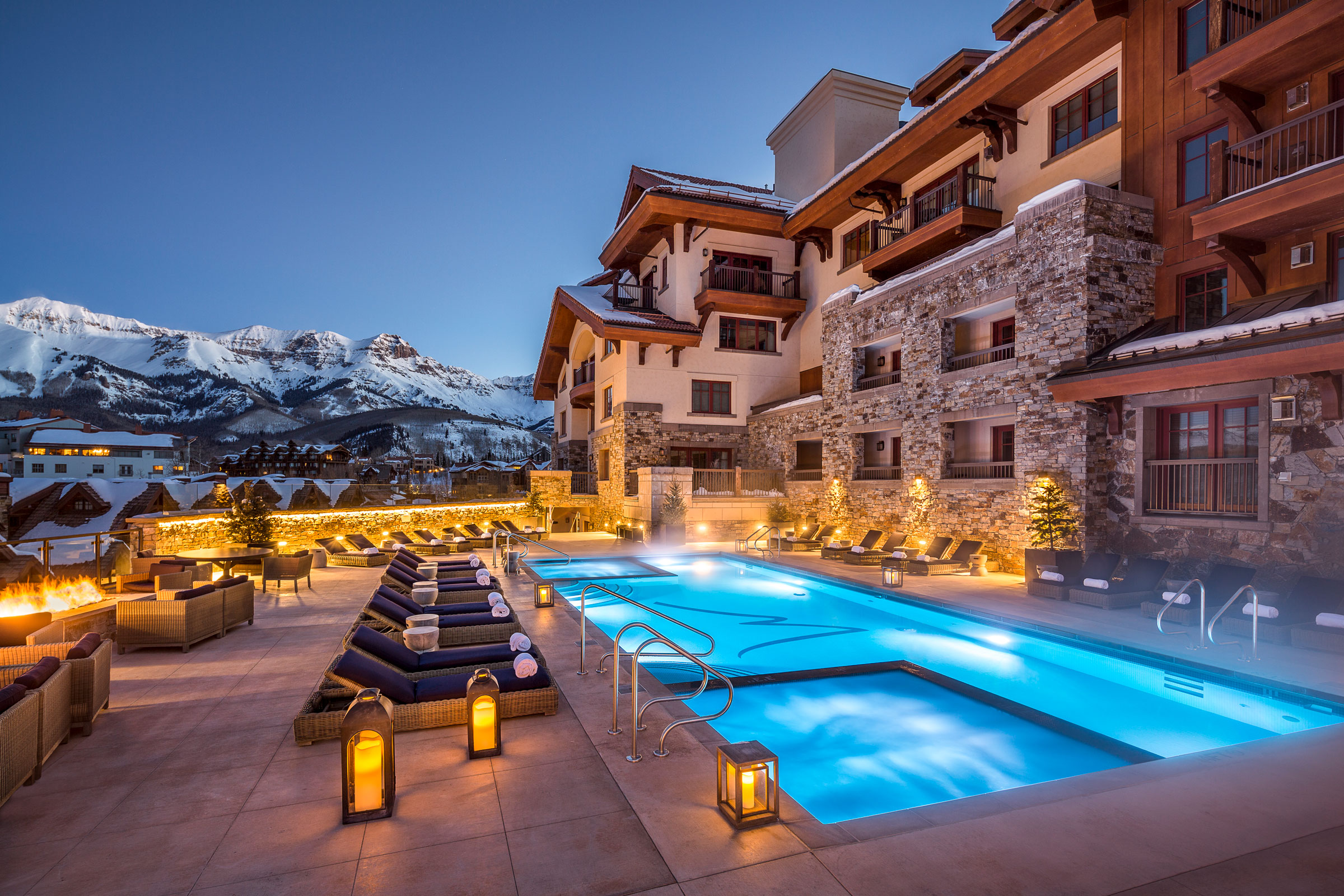Story at a glance:
- Stainless steel aquatic features are quickly gaining market share from traditional solutions like concrete.
- High-rise developers increasingly favor the material for its light weight and water-tight qualities
- The strength and flexibility of stainless steel offer architects endless design opportunities.
Whether in a home or commercial setting, the decision to add aquatic features like a pool or spa to a new project or existing property comes with a multitude of considerations—including construction timelines and material choices.
“It’s never too early to plan for a pool or spa,” says Mike Sage, vice president of sales and marketing at Bradford Products, a leading designer and manufacturer of stainless steel aquatics. “Integration is key. How are we going to integrate this vessel into a building or backyard, run the required power, plumbing, and water features? And material choice is an important factor here.”
Integration is key, and material choice is an important factor here.
While concrete has been the traditional mainstay for building in-ground pools for a generation, stainless steel is quickly gaining ground as customers understand its numerous benefits. As one of the original innovators of stainless steel aquatic solutions, Bradford has an institutional knowledge of the market and material that architects, builders, and homeowners have leveraged for decades.
The company recently celebrated its 40th anniversary and is a third-generation family-owned firm with roots in the steel fabrication trade. After founder Dale Brodeur fell in love with the wine barrel hot tubs he experienced on a trip to California wine country in the 1970s, he decided to build his own spa with the material he knew best back home—stainless steel.
“Family members, friends, and neighbors all came over and discovered this amazing experience he had created and wanted one for themselves, and that’s how things got started,” Sage says.
Since then Bradford Products has become the leader in stainless steel aquatics with high-profile projects in cities across the globe. And as concerns about quality and sustainability become more pressing, the market continues to grow.
Sage sat down with gb&d to discuss the benefits of stainless steel aquatics and how customers can integrate them into their next project.
Versatile Use Cases

Photo courtesy of Bradford Products
One of the primary benefits of utilizing stainless steel for pools and spas is its versatility and the ease at which the materials can be incorporated into any environment—whether residential or commercial.
Consumer interest in backyard pools surged during the earlier stages of the Covid pandemic as people spent more time at home while beaches, public pools, and resorts were closed and people practiced social distancing. Since then stainless steel solutions have captured a larger share of the market from traditional concrete manufacturers. “Our residential business exploded during the peak Covid years. People were inspired to turn their homes into an oasis and getaway, a place for peace and comfort,” Sage says.
Stainless steel is particularly advantageous over concrete in urban settings—one of the market’s fastest growing segments—because the process of installing a stainless steel pool is much less disruptive to the surrounding areas. This is an especially important consideration in dense neighborhoods with smaller lot sizes.
Yet the majority of Bradford’s stainless steel aquatic applications are designed for use in tall buildings, within rooftops or amenity decks on residential, hotel, or mixed-use high-rises. This is because developers need to ensure elevated pools and spas do not crack or leak, causing massive damage to everything below the pool deck.
And unlike with stainless steel, providers of concrete solutions cannot guarantee that the material will not eventually become compromised. It’s also far lighter, which reduces the load requirements and stress on the overall structure. “Any time you put aquatic features in the air, you have to worry about what’s underneath,” Sage says.
Endless Design Capabilities
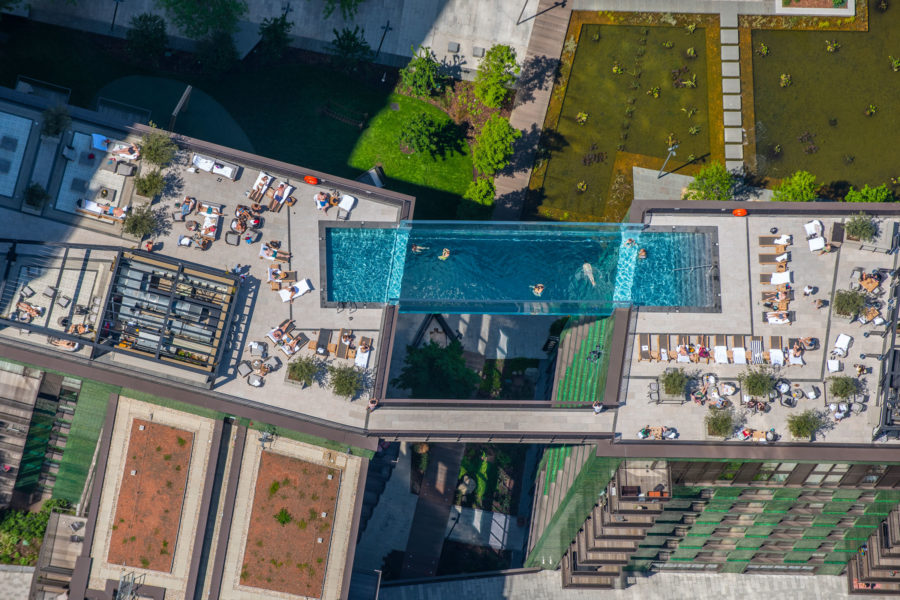
The Skypool at Embassy Gardens in London. Photo by Jason Hawkes
One of the biggest evolutions in the aquatics market in recent years is the increased demand for sophisticated designs that incorporate add-on features like acrylic viewing windows and cantilevers. And compared with traditional pool and spa materials, stainless steel allows designers to go further with their creative visions. “I don’t think I’m overstating it when I say the design possibilities are limitless,” Sage says.
The strength, weight, flexibility, and fabrication methods of stainless steel provide versatility that concrete lacks, and it can be incorporated with other materials seamlessly. This helps facilitate one of the other major trends in pool design today, which is a movement toward sleek, minimalist, and modern designs in aquatic features.
“The uniqueness and sophistication, the hand-built nature, and the quality of these vessels, it’s timeless and beautiful, and the combination of stainless steel and water together is just visually stunning,” Sage says.
One of the most striking examples of stainless steel’s design potential for aquatic features can be seen in the Sky Pool at Embassy Gardens in London. Christened in 2021 as the world’s first “floating pool,” the vessel is suspended 115 feet in the air and spans an 82-foot distance between the building’s residential towers.
Bradford Products designed and constructed two open-ended stainless steel pools, which were engineered with rebates in the walls and floors to secure the 14-inch acrylic center into place. The bearing system, similar to that of a bridge, keeps the pool intact by accommodating the building’s natural movements. “I couldn’t imagine designing this pool out of concrete and not having the base leak or crack,” Sage says.
Save Time and Money
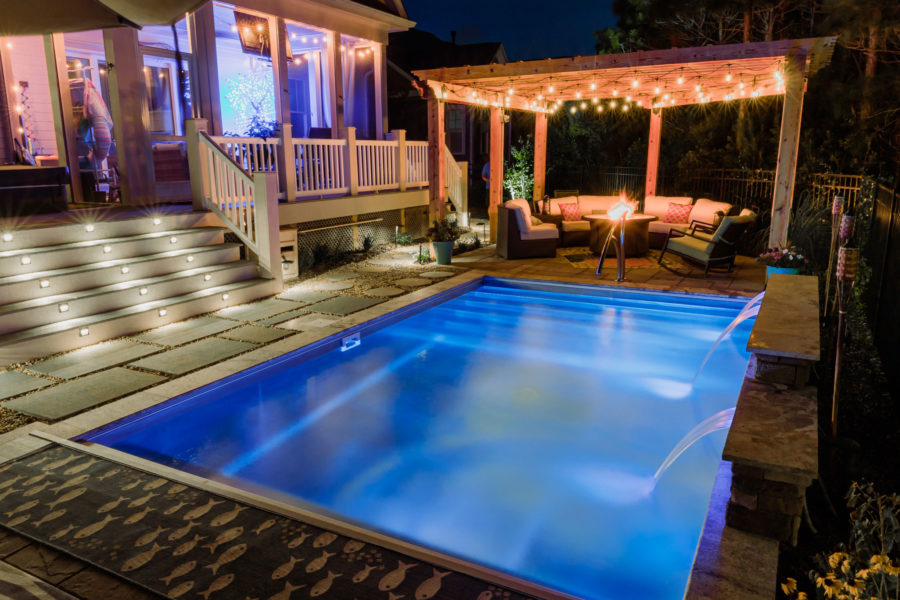
Photo courtesy of Bradford Products
As with any construction project, pool and spa installation schedules and budgets are tight, and any deviation from the timeline of construction phases can result in enormous cost overruns.
“Time is one of the biggest deciding factors when homeowners or developers decide to go with stainless steel,” Sage says. Most clients will save weeks, if not months, in vessel construction and installation time versus traditional concrete solutions—which translates into significant dollar savings as well. “If you’re only looking at first-cost, you’re only getting a fraction of the story.”
A quicker turnaround also affects when customers can start enjoying their aquatic features. For those in Northern states, summers can be relatively short, and customers want to be able to enjoy their pool or spa between when the ground thaws in spring and when the swimming season ends in autumn.
“Concrete can take three to four months to install. In some places that’s your entire summer,” Sage says. “Because we custom prefabricate everything we build, we’re onsite and finishing up construction in a much shorter time frame.”
When high-rise developers balance the upfront costs of stainless steel versus the extraneous costs of concrete—like its heavy weight and the usable space lost in the building—stainless steel more often than not comes out on top. That’s because the material weighs one-third to one-fourth of what a concrete pool would weigh, reducing the structural load and saving head space below. “In some of these taller buildings, you can sacrifice almost an entire floor below for a concrete pool,” Sage says.
Superior Engineering and Durability
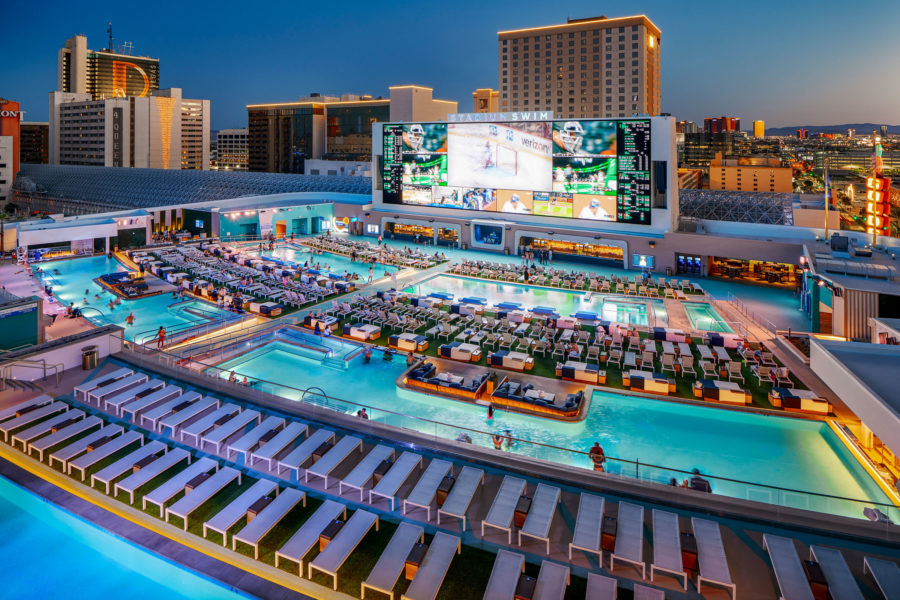
Photo by Ryan Gobuty Photography
For Bradford Products engineering its stainless steel aquatic solutions to ensure exact specification for clients is the most critical part of the process. “We spend an extraordinary amount of time engineering each vessel,” Sage says.
Every wall panel, support frame, step, and fitting is engineered down to the thousandth of an inch in dimensional tolerance. By the time the material gets to the production floor, it’s a matter of assembling the pieces and welding them together for a vessel that fits precisely in place once delivered onsite. “Once it’s installed and water-tight it stays that way,” Sage says.
This dynamic process only adds to the natural durability of stainless steel, a highly powerful material that can withstand extreme elements and natural corrosion.
Bradford’s fully welded stainless steel vessels are designed to withstand structural loads, building settlement and movement, and environmental conditions without compromising the structural integrity of the vessel. The same can’t be guaranteed with traditional materials.
“There are some beautiful concrete pools out there, but they require maintenance,” Sage says. “It’s not a question of if, but when that concrete is going to crack or become otherwise compromised.”
The Sustainability of Stainless Steel
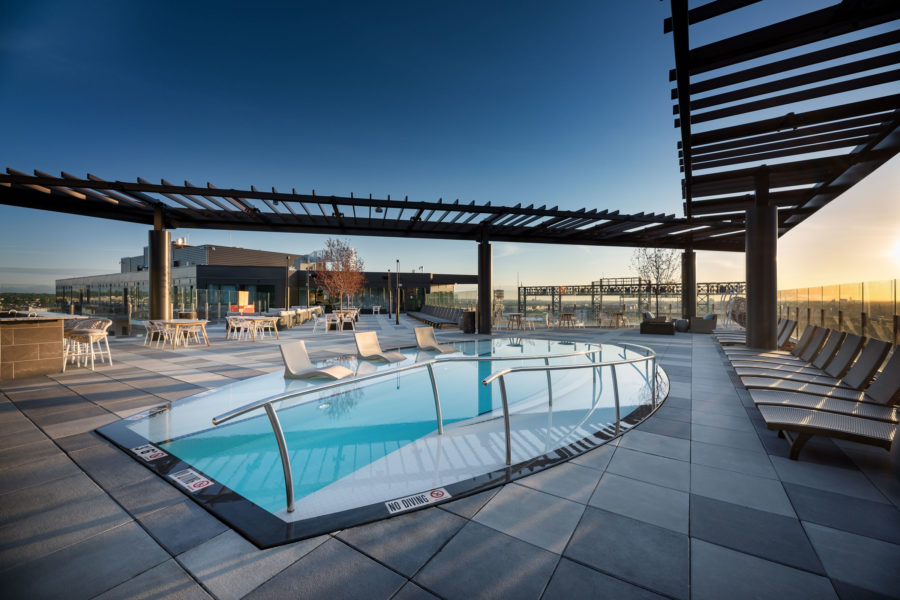
Photo courtesy of Bradford Products
The durability of stainless steel isn’t just a benefit for the owners and operators of pools and spas; it’s a huge positive for the environment as well. “Sustainability starts with durability,” Sage says. “And I can’t think of anything that’s more sustainable than stainless steel when talking about aquatic features.”
The long life cycle of stainless steel means fewer materials and energy are used on further extraction and manufacturing. On top of that, Bradford Products utilizes raw materials that are a minimum of 60% post-recycled content.
“Because of the precision engineering process, there’s very little waste, and 100% of that manufacturing waste is recycled—sent right back to the mill where it ends up in another future sheet of stainless steel,” Sage says.
A stainless steel pool or spa will certainly outlive the 25-year warranty Bradford offers. But if the decision is made to upgrade those features at some point in time, the material itself is 100% recyclable and can be sent right back into the circular supply chain where it began.

